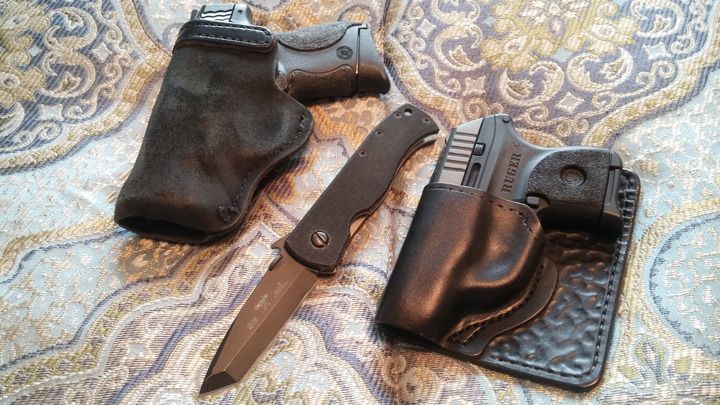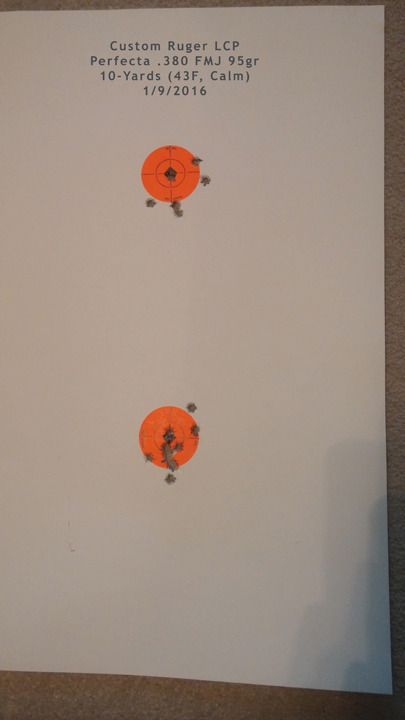For the most part a question like this gets a lot of fans offering their own gun as the best. It doesn't set up a series of decisions for you to pick yours tho.
First, what cartridge? The cartridge is designed to extend your reach - we carry knives and guns to be able to not have to use our fists. How much power do you want and can carry? Some will say a .22 is sufficient, others that .380 isn't. Moving into 9mm pocket guns does trade off concealability, adds weight, and increases the amount of recoil for follow up shot placement.
Research into what you find as a minimum acceptable threshold of power is important - because a lot of things are then decided and the series of decisions that follow on exponentially narrows at each step.
IN GENERAL, in the individuals best interest, no less than .380 is considered a good choice. Guns in that caliber weigh as little as 10 oz unloaded, take a 6 shot magazine or have 5-6 shots in a cylinder, usually fit a rectangle about 5" long by 4" high, and can be shot accurately for the short ranges intended. Here's a link to at thread with links that compare all the guns side by side with dimensions:
http://www.thehighroad.org/showthread.php?t=171820
That is just the first step - the most important as it's the power you project that stops the aggressor. From there it's about how you work with the handgun, which involves your personal considerations. Anyone can eventually shoot any gun well enough, but getting a head start on firing it accurately without extensive practice doesn't hurt.
Next, how much trigger pull weight you will tolerate. There are two types of triggers, Single Action, which usually has a 5-6 pound pull, and double action, from 5 to 12 pounds. SA trigger pull tends to be quite short, DA quite long. That affects the safety - or not. SA guns have safeties as the light and very short triggers are easy to manipulate and fire. DA triggers tend to be "long and heavy" which is a safety measure itself.
Healthy male hands generally can shoot DA triggers ok, but less robust hands, or those past their prime, even injured, not so much. It is NOT a gender related issue as much as those who focus on it try to make it out. It's what YOU prefer in handling the weapon to make it shoot, and the emphasis on what you believe to be safe carry and use.
Pick the trigger type and length of pull, it decides if you get a safety or not.
After that, does it have a last shot slide hold open? If it does a heavy recoil spring ISN'T an major issue because you don't have to rack the slide every magazine you load - plus you don't load a magazine against the slide, either. A gun that holds open on the last shot makes it easy to shoot strings of magazines, or at least the the second one you carry and had to resort to because of the situation. Finding out you have an empty gun because the trigger went click is a bad thing to happen when trading shots in a life or death defense. Better the slide to hold open as a visual and physical sign you need to reload - plus not having to compress the stack of ammo against the slide to do it is important, too. Some guns have very heavy mag springs and slapping a mag into one just to see it fall out as you rack the slide is no joy.
With that, the gun is also easier to practice with at the range, more practice means more familiarity and more accuracy. Shot placement is key with handguns and wasted shots aren't always available - it might take a third magazine, which few carry.
Cartridge, trigger, pull weight, type of safety, last shot hold open. Sights come after and can be changed, the previous issues mostly can't. The gun is either right or it's not in that regard, and triggers are a matter of the inherent design from the ground up. A "light trigger" kit or modification usually doesn't make much difference, and a gunsmith usually charges a decent sum to change it. Put the money up front into the gun for the trigger you prefer and you don't have to pay extra to "fix" one because the design was wrong to begin with. This is where "you get what you pay for" starts adding up and the cheaper guns modified to become equal prove to not be a bargain in the first place.
Those "expensive" $350 pocket pistols are where the market started, what changed was a model or two being discounted to what they are actually worth. They don't compare in every feature and do have issues. You DO get what you pay for - set the required features and don't compromise, as in this class you simply can't add them on later. The gun either has it all - or it's not as good. Your choice.
Note we aren't even talking about the arguable issue of "build quality" or "fit and finish" that so many use as a smoke screen for stacking the social tier into a hierarchy of which is "better" - usually because a bigger credit card limit is their actual measuring stick. And measuring people their real goal. The gun to them is just a symbol of social rank. For you the gun should be the better tool for the job, not where it places you in the stack of who genuflects to who.
Cartridge, trigger action, weight, and slide hold open. Buying a gun to put in your pocket means no BBQ show and tell. Concealed means concealed and it's nobody's business what you carry. Make sure it's what you want and good enough to do the job.
As for easy to draw - goes to 1) your awareness and lack of ability to see things coming where you should have walked away, 2) don't wear your pants so tight. It's not concealed if you can see a print of where it rides like a can of chew in your pocket.



